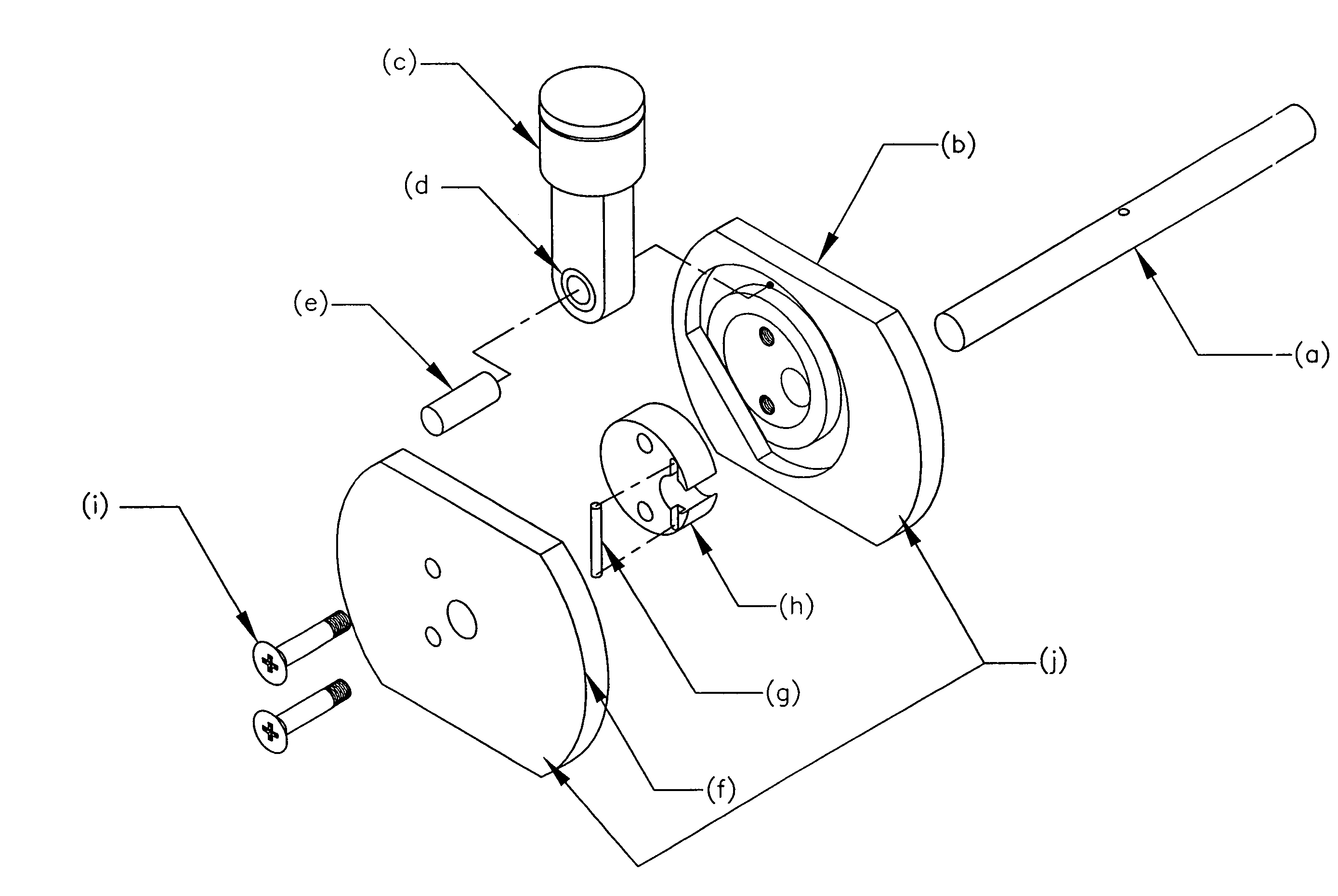Dynamic journal engine
a journal engine and engine technology, applied in the direction of positive displacement engines, bearings, shafts and bearings, etc., can solve the problems of increasing complexity and incorporating difficult geometries, and previous attempts to achieve the same sort of improvement over the simple crank shaft have displayed a remarkable degree of complexity, and achieve the effect of efficient energy conversion
- Summary
- Abstract
- Description
- Claims
- Application Information
AI Technical Summary
Benefits of technology
Problems solved by technology
Method used
Image
Examples
Embodiment Construction
[0025]With reference to the figures, 1 is a depiction of a generic cylinder, piston / rod, bearing, pin, one mirrored image plate with contour, output shaft and crankcase with an improvement on the translation of reciprocating motion to circular motion by incorporating a dynamic journal.
[0026]The cylinder in FIG. 1(a) is closed at one end providing a head for the working fluid to expand against the head itself thus translating the moveable piston / rod, bearing, pin in an opposite linear direction.
[0027]The pin in the bearing in the rod opposite the piston face is depicted in the contour of the plate in FIG. 1(a) at the initiation of the power cycle whereby thermodynamic pressure on the piston crown opposite the cylinder head causes linear motion to be transmitted to said pin which rotates in said bearing creating positive translation of said linear motion to the rotating motion of said contoured plates.
[0028]The contoured plate in FIGS. 1(b), (c), (d), imparts inertial force to said pi...
PUM
 Login to View More
Login to View More Abstract
Description
Claims
Application Information
 Login to View More
Login to View More - R&D
- Intellectual Property
- Life Sciences
- Materials
- Tech Scout
- Unparalleled Data Quality
- Higher Quality Content
- 60% Fewer Hallucinations
Browse by: Latest US Patents, China's latest patents, Technical Efficacy Thesaurus, Application Domain, Technology Topic, Popular Technical Reports.
© 2025 PatSnap. All rights reserved.Legal|Privacy policy|Modern Slavery Act Transparency Statement|Sitemap|About US| Contact US: help@patsnap.com



